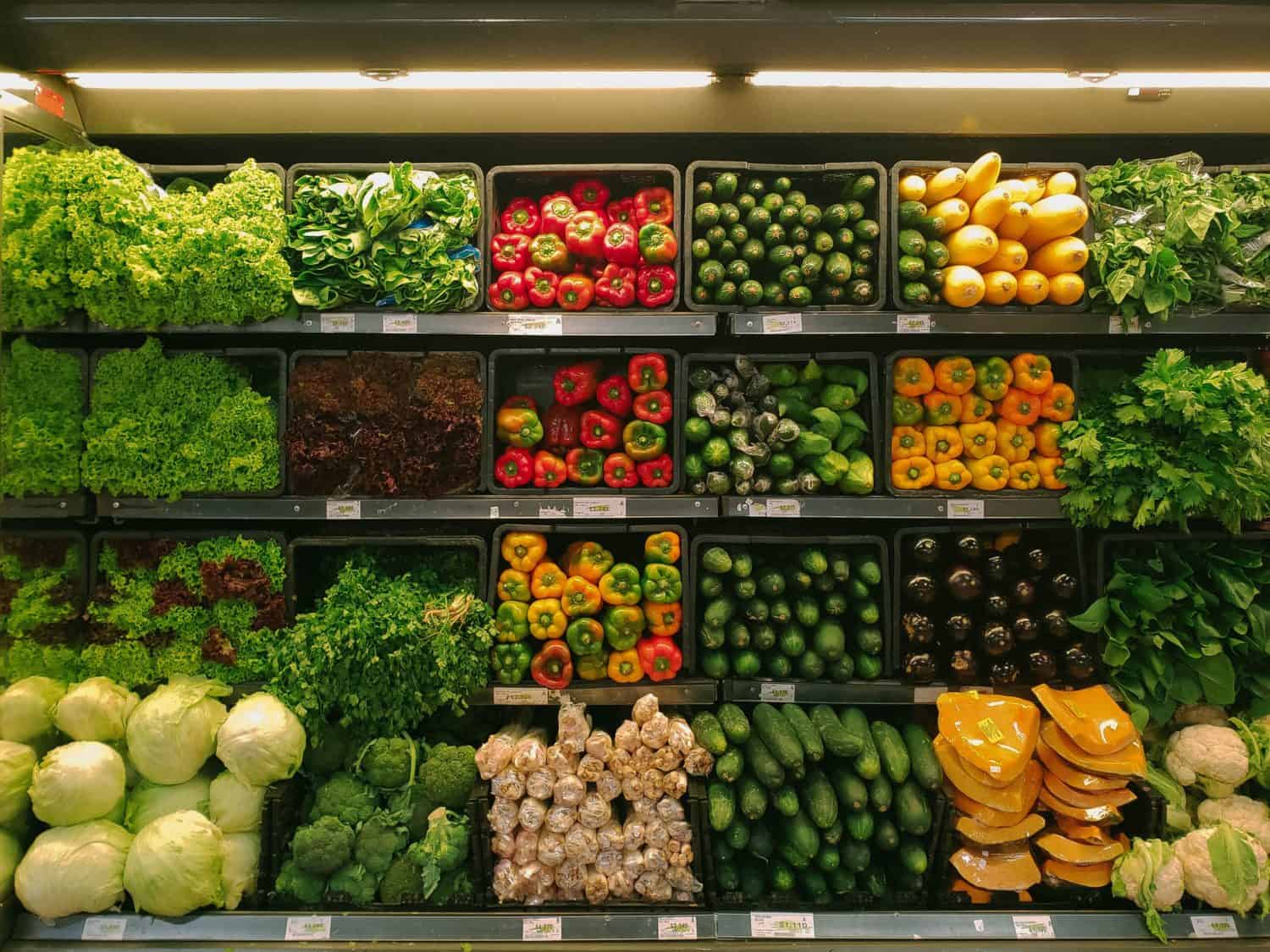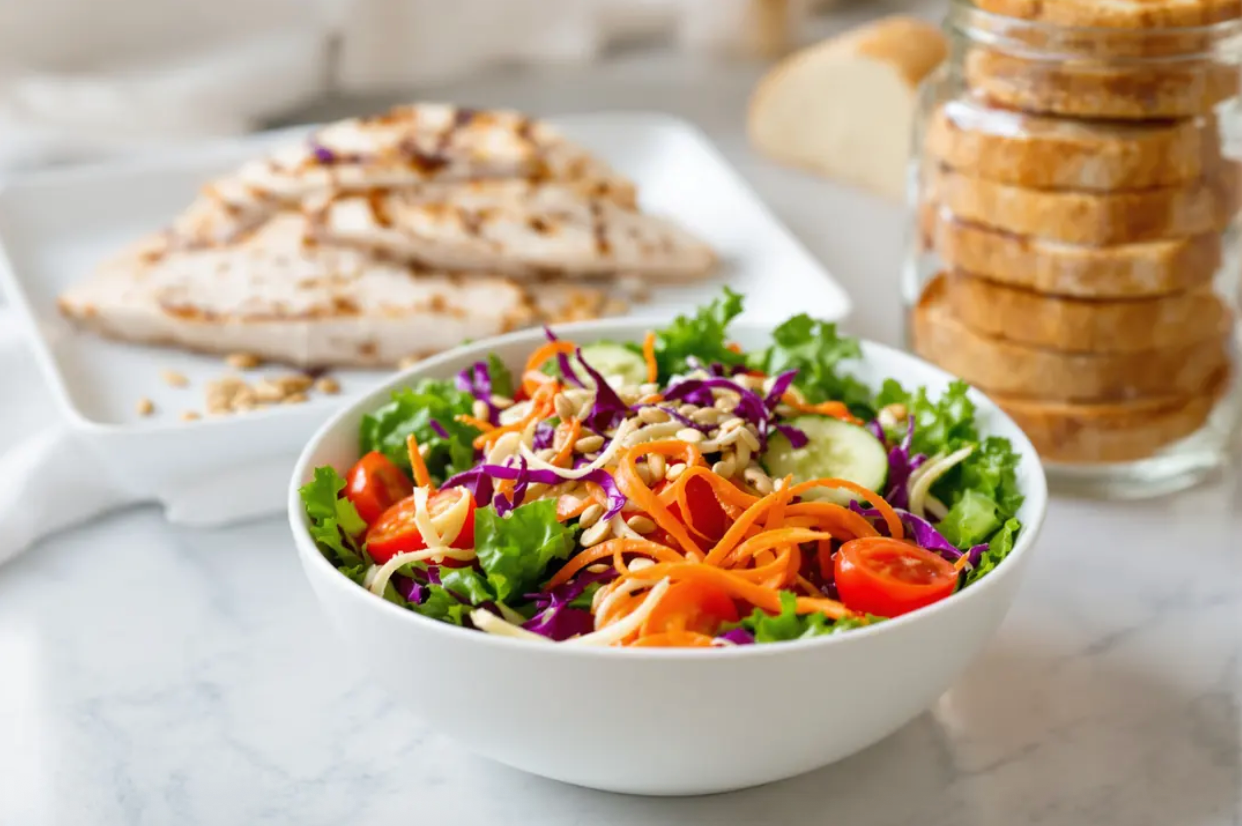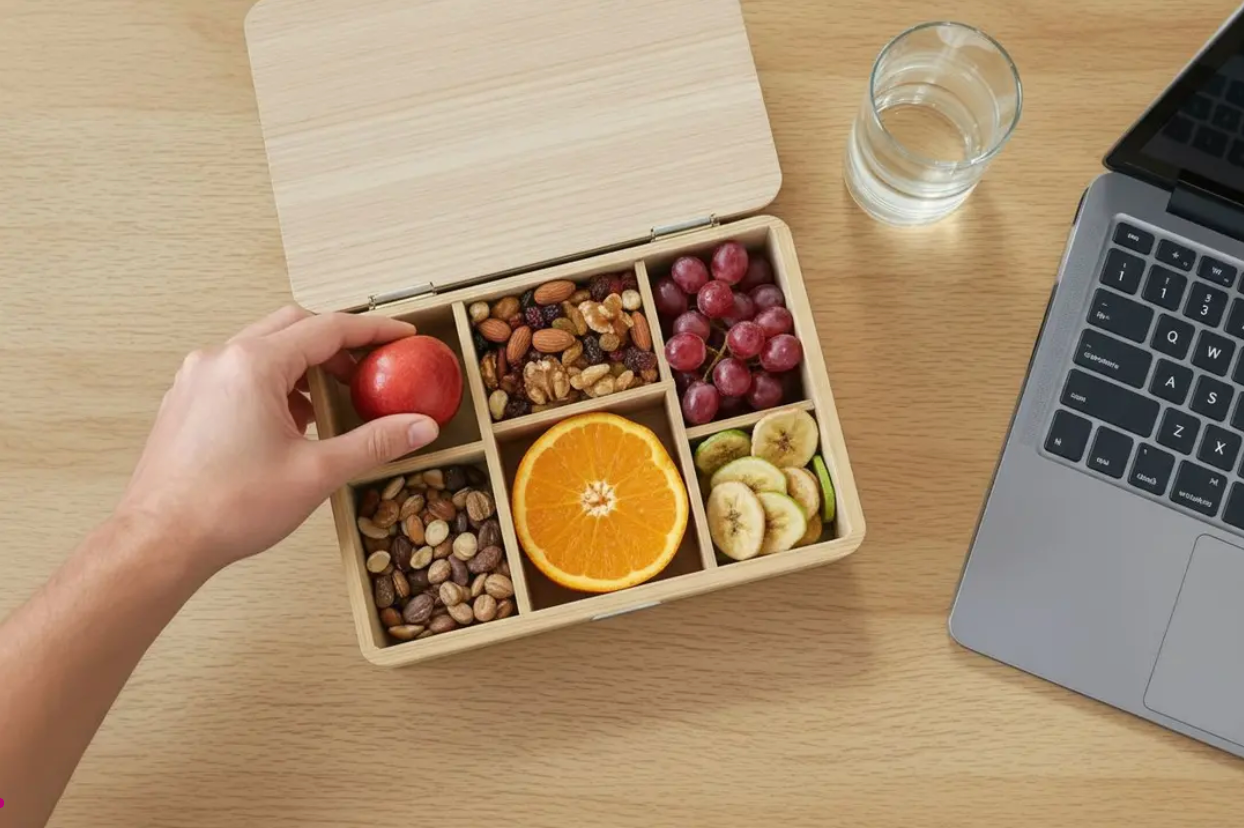It’s not easy shopping for family meals that are nutritious, creative, and budget-friendly. But a grocery list that’s thoughtfully engineered can help you achieve greater supermarket success. A well-organized grocery list can lead to saving both time and money during each shopping trip.
If you’re thinking that a short, simple, and cheap grocery list is one of those rare and beautiful things you’ll never find in your pocket, let us prove you wrong! A simple grocery list can make your shopping trip more efficient and help you save time.
1. Stick to a Grocery Budget
Do you really know how much you’re paying for groceries each month?
According to the USDA Economic Research Service, as of mid-2025, Americans are spending approximately 10.6% of their disposable income on food, with about 5.0% allocated to groceries (food at home) and 5.6% to dining out. The Bureau of Labor Statistics reports that the average household grocery bill ranges between $500 and $600 per month, depending on region and household size. Meanwhile, financial platforms like Mint (via GoBankingRates) recommend that a family of six should budget approximately $1,200 to $1,300 per month for groceries. With food inflation still trending at around 2–2.5% year-over-year, families, particularly in high-cost-of-living areas, often exceed these guidelines, highlighting the importance of smart grocery planning and cost-saving strategies.
The amount of money you can comfortably allocate to groceries will depend on your family size, location, and level of disposable income. But buying healthy food on a budget is certainly within reach.
As part of your household financial conversations, examine past grocery receipts or card charges and try to find spending patterns. Looking out for sales and using coupons can also help you stick to your grocery budget.
From there, you can determine if that amount of spending feels right for your family or if you ought to cut back somewhere. Some meals are more expensive to make than others, so you might opt for budget bites and avoid indulgences or impulse buys to keep your grocery receipts short and sweet.

2. Establish Weekly Meal Plans Ahead of Time
Before you even think of putting together your list or hitting the grocery store, it’s important to decide what you and your crew actually want to eat!
Come up with a weekly menu that covers breakfast, lunch, dinner, and any snacks for on-the-go moments. This can be as simple or as intricate as your family’s schedule calls for. Using a calendar to organize your weekly meal plans and grocery shopping can help you stay on track and adjust for any upcoming events.
Here’s what one day from a fairly simple meal plan could look like:
| Breakfast | Lunch | Dinner |
| Yogurt and granola | Salad | Lasagna |
If you have the breakfast system under control and your kids eat school lunches, dinner might be your only real variable to keep track of.
But if everybody follows a different schedule, prefers to eat different things, and needs different nutrients, it can get pretty complicated. This calls for an extra dose of detail:
| Breakfast | Lunch | Dinner | |
| Cindy | Yogurt and granola | Packed lunch: Salad | Lasagna |
| Mark | Eggs | Lunch at home: Veggie burger | Lasagna |
| Liam | Banana and peanut butter | Packed lunch: Turkey sandwich> | Packed dinner: Leftover rice bowl |
| Brit | Cereal | School lunch | Lasagna |
This might seem like a lot of work just for one weekday. But, as you can see, the grocery list is starting to write itself!
And you’ll never have to field those “what’s for breakfast?” questions again. If yours is a family of selective eaters, try to involve the whole family in the meal planning process and keep it posted on the fridge. Making meal planning and grocery list creation a weekly routine can help everyone stay organized and ensure nothing is missed.
If everyone’s involved, why not bring the gang along to the store, too? According to a global survey by Nielsen, 57% of respondents find grocery shopping to be a fun family activity!
3. Choose Recipes With Fewer, Fresher Ingredients
During the meal-planning phase, prioritize meals and recipes with just a few fresh ingredients, such as basic cooking oils, and you’ll end up with a more basic grocery list.
When you’re trying to keep your grocery experience simple, avoid unusual specialty foods and hard-to-find ingredients. Instead, find recipes featuring fruits and vegetables that are in season.
There are plenty of advantages to following nutritious recipes rather than winging it with whatever you can find. Healthful recipes will call for fewer processed ingredients and more real, whole foods.
This will not only help you eat right but it will also streamline your shopping experience. At the supermarket, you can stick to the fresh perimeter and might only need to duck into the central aisles for a few items.

4. Make Enough Food for Leftovers
By doubling a recipe or informally expanding it (you know, an extra chicken breast here, a few more potatoes there) you can transform one meal into two or three. This will certainly slim down your grocery list — and it will spare you from being stuck cooking day after day. Storing leftovers in the freezer is also a smart way to reduce food waste, as it helps preserve meals for future use and ensures that food doesn't spoil before you can eat it.
If you take this approach, just remember to note any quantity changes on the recipe so you don’t end up with weak flavors or off-balance quantities. Planning for leftovers is a great way to minimize food waste and make the most of your grocery shopping.
5. Adapt Recipes Using Ingredients That Serve Double-duty
Use versatile ingredients to simplify your grocery shopping list — and don’t be afraid to substitute like-foods across recipes.
For instance, if Recipe A calls for arugula and half of one yellow onion, and Recipe B involves spinach and a small white onion, just stick with your favorite leafy green and one extra-large onion in your preferred variety. This sneaky cheat will help you save money on groceries every time!
It also helps to keep your pantry stocked with spices and cooking essentials like flour, eggs, and olive oil. With the right components already in the pantry, you can whip together a delicious meal with very few new ingredients.
Consider maintaining a master grocery list to track your essential items and easily note when you are running low, so you can add items before you run out.
6. Keep a Running Grocery List on the Fridge
When you run out of an essential household product or grocery item, it helps to have a system for remembering it.
Stick a magnetic notepad or whiteboard on the fridge and consider it your running grocery list. You can add items to your list using a paper list or your phone, whichever is more convenient. Next time the last drop of milk ends up in your morning tea, simply jot “milk” down. And ask the rest of the family to jot down what snack foods and drinks they might want for the coming week.
When you’re putting together your real-deal grocery list, check here to see what assorted ingredients and pantry essentials need to be restocked. Mark items as you add them to your cart to help prevent forgotten items.
Regularly updating your list helps ensure you don't end up with forgotten items.
7. Organize Your Shopping List by Category (or Try a Template)
A well-organized grocery list will make your time in-store quicker and less stressful. A well organized list helps you stick to your plan and avoid distractions.
The most logical way is to group grocery items based on where they’re located in the supermarket. Organizing your list according to the store layout can make your shopping trip more efficient. To do this, you can create a simple grocery list template on a scrap piece of paper, or make copies of a grocery list printable.
But you can’t simply make a grocery list by categorizing things into food groups like “vegetables” and “grains.” Members of the same food group often appear at different ends of the supermarket — like fresh bell peppers and frozen peas, or bread from the bakery versus a packaged, sliced loaf.
It’s more helpful if your grocery list includes more specific, aisle-based categories. Choose (or DIY) a grocery list template that works for you and relates to the layout where you shop. You might also try a grocery list app to simplify the process even further.
Here’s one way to organize a grocery shopping list:
-
Produce
-
Bakery
-
Meat, poultry, and seafood
-
Dry and canned goods
-
Refrigerated foods
-
Frozen foods
-
Cleaning supplies
-
Personal care items
When you’re ready to fill out the template and make a grocery list, you’ll need to read through the week’s recipes, your meal plan, and the running list on the fridge. Scan each one for items you need to purchase. Rather than writing those items down in the order that you see them, jot each one under the correct category. Don’t forget to add “1 box of Perfect Bars” under the refrigerated foods section!
Simple and effective! This system will help you steer clear of aisles you don’t need to go down, discourage impulse buys, and get you to the checkout line faster. Using shopping lists and grocery lists is a proven way to make your shopping more efficient and less stressful by sticking to your plan.
8. Make Each Line Item as Specific as Necessary
If you’re the sole list-writer/grocery-shopper extraordinaire, you can use one-word bullet points or abbreviations under each food category.
But, if you’re going to make a grocery list for another family member to take it to the store, you’ll probably need to be more specific about what you want.
Don’t just write “bread” when you have a highly specific whole-grain rye in mind. Include brand names, flavors, and quantities. Specify the cut of meat, variety of apple, and whether you want “absolutely NO pulp” or “LOTS OF pulp” in your OJ. This point is especially important for dairy products—for example, specify cheddar cheese instead of just cheese, or list the exact type of yogurt you want. Choosing trusted brands is also an important point when making your list, as it helps ensure quality and consistency.
You can even text your loved one a picture of the thing you’re running out of, so they know exactly what they’re scanning the shelves for.
But if you’re happy with the dealer’s choice, let your super-shopper know. Tell them ahead of time that you’d just like any fresh fruit that looks good, or whichever filet of fish is on sale.
9. Consider a Grocery Delivery, Pick-up, or Subscription Service
This option might not be available in every community. But if you have access to a grocery delivery or curbside pick-up service, give it a shot sometime!
Ordering groceries online is a great way to shop faster and more thoughtfully. You can skim the nutrition labels for each item before you add it to your cart. Once it’s in there, the running checkout total will help you stick within your grocery budget.
You can even subscribe to have grocery essentials replenished on a regular basis. That’s one less thing to remember when it’s time to make a grocery list.
If your favorite Perfect Snacks seem to disappear from the fridge a little too quickly, subscribe and save 10% on your order. Save big on every shipment, choose your delivery frequency, and cancel or pause at any time. However you snack, we’ve got you covered!
Even with delivery or subscription services, remember to leave room for spontaneous choices or new products you might want to try.
Try out our downloadable grocery list for your next trip to the store!


